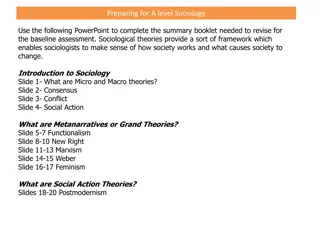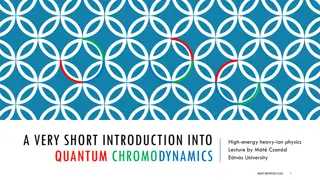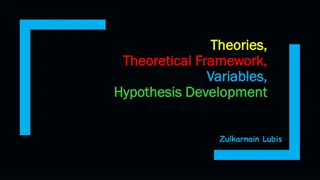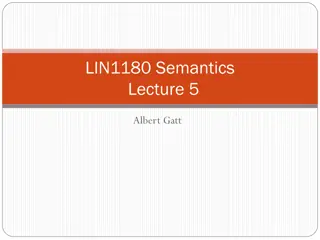Indian Theories of Communication: Understanding Sadharanikaran
Indian communication theories have deep roots in religious literature and fine arts, with concepts like Sadharanikaran emphasizing mutual understanding and commonness. This Sanskrit term reflects the essence of communication as a relationship based on shared feelings and culture, rather than persuasion. Elements of Sadharanikaran include nine permanent moods that evoke different emotions, embodying the goal of enjoying the exchange of messages.
Download Presentation

Please find below an Image/Link to download the presentation.
The content on the website is provided AS IS for your information and personal use only. It may not be sold, licensed, or shared on other websites without obtaining consent from the author.If you encounter any issues during the download, it is possible that the publisher has removed the file from their server.
You are allowed to download the files provided on this website for personal or commercial use, subject to the condition that they are used lawfully. All files are the property of their respective owners.
The content on the website is provided AS IS for your information and personal use only. It may not be sold, licensed, or shared on other websites without obtaining consent from the author.
E N D
Presentation Transcript
Communication Theory Dr. Yogendra Kumar Pandey Assistant Professor MA(JMC), Shia P.G. College, Lucknow
What is Communication? The English word communication is derived from the Latin noun communis, and the Latin verb communicare which means to make common. In an attempt to define the term communication the ideas that crop up are: interaction, interchange, transaction, dialogue, sharing, communion and commonness. Communication in its simplest sense is a human relationship involving two or more persons who come together to share, to dialogue, and to commune, or just be together. Communication thus is an act of social and cultural togetherness
Indian Theories of Communication Indian communication theories are rooted in Indian religious literature, Indian philosophy and fine arts. It was first used in the 10th century commentary called Natyashastra by Bharata, the principle source of information for the Indian theory of communication.
SADHARANIKARAN The closet word to communication in Indian classical literature is Sadhranikaran. This Sanskrit term comes closest to the sense of common or commonness usually associated with communication. The most important assumption in the process of Sadhranikaran is that it can only be understood by the Sahridayas . It literally means one heart, or one who has the capacity to receive the message. Communication according to Sadhranikaran is a relationship based on common and mutual understanding and feeling for Sahridaya. This innate ability is acquired through culture, adaptation and learning.
Elements of Sadharanikaran Apart from literature, Indian communication theories are also grounded in fine art traditions. It is composed of permanent mood called bhava and illustrated through the dance form. The essence of communication lay in achieving commonness and oneness as stressed in Bharata s Natyashastra.
Elements of Sadharanikaran These moods are capable of arousing corresponding sate of feelings. There are nine permanent moods that give rise to nine forms of aesthetic pleasure. For example; Hasya laughter, Irsha, jealousy, Karuna , compassion etc Harsh (Humour,Joy) Bhayanaka (Anger) Shant (Peace) Shringar (Love) Adbhuta (Wonder) Shaurya (Heroism)
The goal of Sadhranikaran is not persuasion but the very enjoyment of disseminating and receiving the message. Here the source is perceived as having the higher status, and the relationship is hierarchical of domination and subordination. The source is held in high esteem by the receiver of the information, a relationship that is idealized and romanticized
Thanks THANKS























